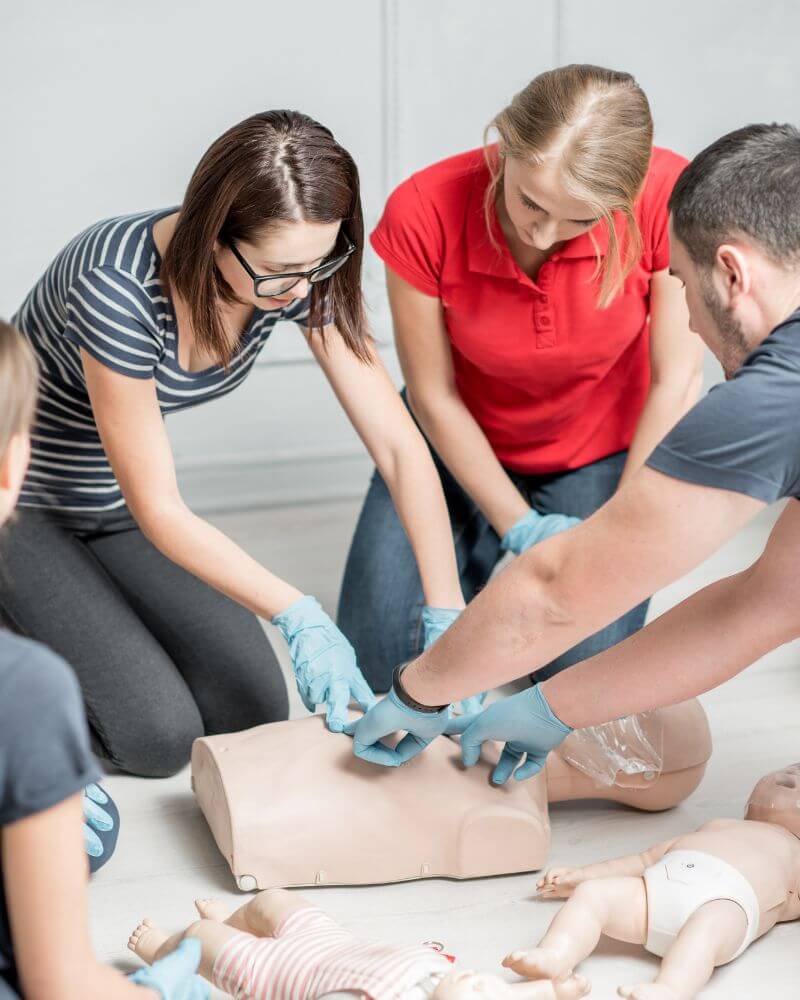Introduction
In our busy world, emergency situations can strike without caution. Whether it's a small injury, a clinical emergency situation, or a lethal scenario, knowing exactly how to offer emergency treatment can make all the distinction. This is where a First Aid course enters into play. Lots of people might question what they can obtain from such training, and this post intends to clarify that.
By enrolling in a First Help and mouth-to-mouth resuscitation course, you do not just learn about wrapping wounds or performing CPR; you equip on your own with vital skills that could save lives. So, just what will you discover in a thorough training course? Let's dive into the details.
First Help Basics: What You'll Learn in an Extensive Course
Understanding First Aid
What is Very first Aid?
First help describes the first help given to somebody suffering from an injury or ailment until specialist Go to this website clinical aid gets here. It incorporates various strategies and skills varying from basic injury like lifesaving methods like CPR (Cardiopulmonary Resuscitation).

Importance of First Aid Training
Why Must You Take an Emergency Treatment Course?
Taking a First Help course is crucial for numerous factors:
- Confidence: Knowing just how to respond in emergency situations can infuse confidence. Life-Saving Skills: The ability to perform mouth-to-mouth resuscitation or assist with choking can conserve lives. Career Development: Several careers require accreditation in very first aid. Community Duty: Being trained methods you can help others effectively.
Overview of CPR
What is CPR?
CPR, or Cardiopulmonary Resuscitation, is an emergency treatment carried out when a person's heart beat or breathing has stopped. It incorporates breast compressions with rescue breaths to preserve blood flow and oxygenation up until specialist help arrives.
The Structure of a Comprehensive Emergency Treatment Course
What Does an Emergency treatment Course Include?
A well-shaped First Aid and CPR course typically covers the following subjects:
Introduction to First Aid Legal and Ethical Considerations Scene Safety Basic Life Assistance (BLS) CPR Techniques Choking Relief Wound Care Management Burn Treatment Managing Shock Recognizing Medical Emergencies Using an Automated External Defibrillator (AED)Legal Facets of First Aid
Are There Legal Effects Associated With Providing First Aid?
Yes, giving emergency treatment does bring legal duties referred to as "Do-gooder laws." These regulations safeguard people that help others in emergency situations, gave their actions are sensible and not reckless.
Scene Safety: The First Step
How Do You Make sure Scene Safety?
Ensuring scene safety entails analyzing the setting before coming close to the sufferer:
- Look for potential threats (web traffic, fire). Make sure it's risk-free for both you and the victim.
Basic Life Support (BLS)
What Function Does BLS Play in Emergency Situations?
Basic Life Assistance consists of the basics of preserving life features up until more medical help arrives. This area covers essential skills such as:
- Checking responsiveness Activating emergency services Performing high-quality upper body compressions
Advanced CPR Techniques
What Are Advanced Techniques Covered in CPR Courses?
Advanced methods might consist of:
- Two-rescuer CPR Use of barrier devices for rescue breaths Special considerations for babies and children
Choking Relief Techniques
How Do You Aid A Person Who is Choking?
Choking relief entails two vital techniques:
The Heimlich maneuver for adults. Back impacts and chest thrusts for infants.Wound Treatment Management
How Do You Correctly Take Care Of Wounds?
Effective injury management involves:
- Cleaning the injury with saline or tidy water. Applying antibiotic ointment. Covering it with sterile dressings.
Burn Treatment
What Work Methods for Dealing With Burns?
Burn treatment differs by degree:
Cool the shed under running water. Cover it with non-stick dressings. Seek medical focus for severe cases.Managing Shock
How Is Shock Acknowledged and Treated?
Recognizing shock consists of looking for signs and symptoms like pale skin, rapid pulse, or complication:

Recognizing Medical Emergencies
What Kinds of Medical Emergencies Ought To You Realize Of?
Common medical emergency situations include:
- Heart assaults Stroke Severe allergic reactions Understanding these conditions aids you act quickly.
Using an Automated External Defibrillator (AED)
How Do You Use an AED Correctly?
Using an AED entails turning it on, affixing pads according to illustrations on the gadget, and following voice triggers carefully.

Importance of Continual Learning
Why Is Continuous Understanding Important in Emergency Treatment Training?
Continuous understanding guarantees you remain upgraded on finest techniques and brand-new protocols in emergency treatment care.
FAQs Concerning First Aid Courses
What Is Consisted of in a Requirement Emergency Treatment Course?- A typical training course commonly covers standard life assistance, wound administration, choking relief techniques, and legal considerations.
- Most courses vary from 6 hours to 16 hours relying on the deepness of material covered.
- Yes, upon successful completion of most courses, individuals obtain a first aid certificate, which is usually valid for 2 years.
- Yes! Lots of organizations provide on-line courses that provide versatile learning atmospheres while still being effective.
- Absolutely! Hands-on technique is essential for understanding abilities like chest compressions and making use of AEDs effectively.
- Generally, there are no age limitations; however, participants have to be psychologically skilled to find out these life-saving skills effectively.
Conclusion
Enrolling in an extensive first aid course gears up people with vital understanding that can save lives during emergencies-- whether in the house, work, or out in public areas! From understanding standard life assistance treatments such as CPR to learning just how to manage injuries appropriately or recognize signs of shock-- these programs give very useful training that anyone can benefit from!
As we browse via our every day lives loaded with unpredictability-- what better means than preparing ourselves with knowledge gotten from organized training sessions focused on saving lives?
In conclusion-- if you're pondering using up any type of first-aid training-- never ever wait! Outfit yourself today with these powerful tools since preparedness genuinely makes all the difference when every 2nd counts!